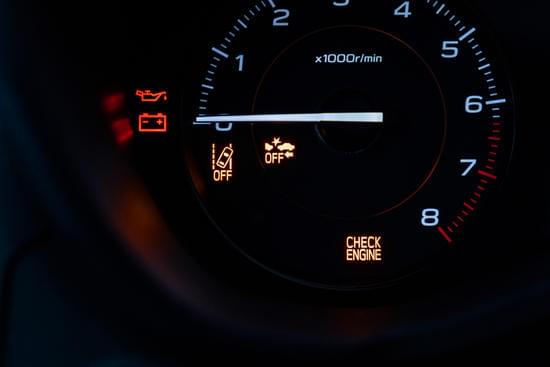1.How Vehicle Safety Features Can Lower Your Car Insurance Premiums

When it comes to car insurance, many factors determine the cost of your premium. From your driving history and age to the make and model of your vehicle, each plays a role in shaping how much you pay. However, one of the most significant yet often overlooked factors is your vehicle’s safety features. Today’s vehicles are equipped with advanced safety technologies that not only protect drivers and passengers but can also significantly lower your car insurance premiums. In this article, we’ll explore how vehicle safety features influence your insurance costs, which safety features can help you save, and how you can make the most of these savings.
1. Understanding the Role of Vehicle Safety Features in Insurance Premiums
Before diving into the specifics of how safety features can lower your premiums, it’s important to understand the basic principles of how auto insurance works. Car insurance companies assess risk when determining premiums. A key factor in this risk assessment is the likelihood of the driver getting into an accident, sustaining injuries, or damaging the vehicle.
The more safety features your car has, the lower the risk of severe accidents and injuries. Insurers view these vehicles as less likely to be involved in costly claims, leading to a reduction in your premium. Therefore, if your car has features that mitigate the risks of accidents or reduce the severity of collisions, your insurer may offer you a discount on your premium.
2. How Advanced Safety Features Affect Premiums
A. Anti-lock Braking System (ABS)
Anti-lock brakes prevent the wheels from locking up during sudden braking, allowing the driver to maintain steering control. ABS is especially helpful in preventing skidding and reducing the chances of an accident. Vehicles equipped with ABS are considered safer because they lower the risk of a crash, which can result in a lower insurance premium.
Key Points:
- Prevents wheel lock-up during emergency braking.
- Helps maintain steering control in slippery conditions.
- Reduces the risk of accidents, potentially lowering insurance costs.
B. Electronic Stability Control (ESC)
ESC is designed to detect and reduce loss of traction by automatically applying brakes to individual wheels, helping the driver maintain control during skidding or sharp turns. ESC has been proven to significantly reduce accidents, particularly rollovers, which are often costly to insure. Many insurance companies provide discounts for vehicles equipped with ESC.
Key Points:
- Reduces the risk of skidding and rollovers.
- Enhances vehicle control, especially on slippery roads.
- Often results in lower premiums, as it reduces accident likelihood.
C. Airbags
Airbags are one of the most common safety features in modern vehicles. These devices deploy in the event of a collision to cushion the occupants and reduce the risk of injury. Cars with advanced airbag systems, including side-impact airbags and curtain airbags, offer additional protection and are seen as safer by insurance companies.
Key Points:
- Protects passengers in the event of a collision.
- Reduces injury severity and the need for medical treatment.
- Many insurers offer discounts for cars equipped with multiple airbags.
D. Backup Cameras and Parking Sensors
Rearview cameras and parking sensors help drivers avoid collisions while reversing or parking by alerting them to nearby obstacles. These features are especially helpful in preventing low-speed accidents that might otherwise lead to expensive repairs. Insurance companies recognize the value of these systems in reducing collisions and may offer discounts for vehicles equipped with these safety features.
Key Points:
- Reduces the risk of low-speed collisions.
- Helps drivers navigate tight spaces with more accuracy.
- Can lead to discounts on insurance premiums.
E. Lane Departure Warning and Lane Keeping Assist
Lane departure warning systems alert drivers if they unintentionally drift out of their lane, while lane-keeping assist takes it a step further by steering the vehicle back into the lane. These features are especially beneficial for preventing accidents due to distracted or drowsy driving.
Key Points:
- Alerts drivers to unintentional lane departure.
- Helps prevent accidents caused by distracted driving.
- Reduces accident risks, leading to potential premium discounts.
F. Adaptive Cruise Control
Adaptive cruise control automatically adjusts the vehicle’s speed to maintain a safe distance from the car in front. This feature can prevent rear-end collisions by ensuring the vehicle slows down as traffic conditions change. Many insurance companies offer discounts for vehicles with adaptive cruise control, recognizing that they reduce the likelihood of accidents.
Key Points:
- Maintains a safe distance from other vehicles.
- Helps prevent rear-end accidents.
- Often leads to lower premiums due to reduced collision risk.
G. Blind Spot Monitoring
Blind spot monitoring alerts the driver to vehicles in their blind spots, which can help prevent side-swipe accidents. This feature is particularly useful when changing lanes on highways or busy roads. By reducing the risk of accidents caused by blind spots, this system can lower your insurance premiums.
Key Points:
- Alerts drivers to vehicles in their blind spots.
- Reduces side-swipe accidents and related insurance claims.
- May result in premium discounts from insurers.
H. Automatic Emergency Braking (AEB)
Automatic emergency braking systems detect an impending collision and apply the brakes to prevent or reduce the severity of the crash. AEB has been proven to reduce rear-end collisions and the overall number of accidents. Insurance providers often reward drivers with lower premiums for vehicles equipped with AEB, as it directly impacts accident prevention.
Key Points:
- Automatically applies brakes to avoid or mitigate a collision.
- Reduces the number of accidents, especially rear-end crashes.
- Can lower your premiums by reducing accident-related claims.
3. Insurance Discounts for Vehicle Safety Features
Most insurance companies offer discounts for vehicles equipped with certain safety features. These discounts can vary depending on the insurer, but they typically fall within the following categories:
- Anti-theft Discounts: If your vehicle is equipped with anti-theft devices like alarms, tracking systems, or immobilizers, you may receive a discount.
- Safety Features Discount: As discussed, safety features like ABS, ESC, airbags, and backup cameras often qualify for discounts.
- Bundling Discounts: If you bundle your car insurance with other policies (home, life, etc.), you may receive a multi-policy discount.
- Good Driver Discounts: Insurers offer discounts to drivers with a clean driving record, particularly if your vehicle has advanced safety features that help you avoid accidents.
By ensuring your vehicle has the latest safety technology, you may qualify for multiple discounts, significantly reducing your premiums.
4. How Vehicle Safety Features Save You More Than Just Money
While lower premiums are one of the most obvious benefits of driving a car equipped with advanced safety features, there are other advantages to consider:
A. Reducing the Risk of Injury
Many safety features, such as airbags and automatic emergency braking, are designed to minimize injury in the event of an accident. This can result in fewer medical expenses for you and your passengers, as well as a reduced risk of long-term disability. Fewer injuries also mean fewer claims and a lower chance of your insurance premiums rising in the future.
B. Reducing Vehicle Damage
Safety technologies like ESC, AEB, and adaptive cruise control are designed to prevent accidents from occurring in the first place. Fewer accidents mean fewer repairs to your vehicle, reducing out-of-pocket expenses and helping maintain your car’s value. This, in turn, can help keep your collision and comprehensive coverage premiums in check.
C. Improving Resale Value
Vehicles with advanced safety features tend to retain their value better over time. If you decide to sell or trade in your car, buyers may be willing to pay a premium for a vehicle equipped with the latest safety technology. This can make it easier to recover the cost of your car purchase when you’re ready to upgrade to a new model.
5. How to Make the Most of Safety Features to Lower Your Premiums
To maximize the savings from safety features, consider the following tips:
- Check for Discounts: Ask your insurance provider about the specific discounts available for your vehicle’s safety features.
- Keep Your Safety Features Updated: Some older vehicles may not have the latest safety features. Upgrading to newer models with more advanced technology could result in additional savings.
- Consider Installing Aftermarket Features: If your vehicle doesn’t have some of the newer safety features, consider installing aftermarket devices like backup cameras or anti-theft systems. Some insurers will offer discounts for these installations.
Conclusion
Vehicle safety features play a critical role in lowering your car insurance premiums. Advanced technologies such as anti-lock brakes, lane departure warning, and adaptive cruise control reduce the likelihood of accidents, making your car less risky to insure. By understanding how these features work and how they affect your insurance premiums, you can make informed decisions that help you save money while ensuring a safer driving experience.
Always remember to check with your insurer about available discounts for safety features, as they can add up to significant savings. Additionally, keeping your vehicle’s safety technology up to date will not only protect you on the road but also keep your premiums affordable over time.



